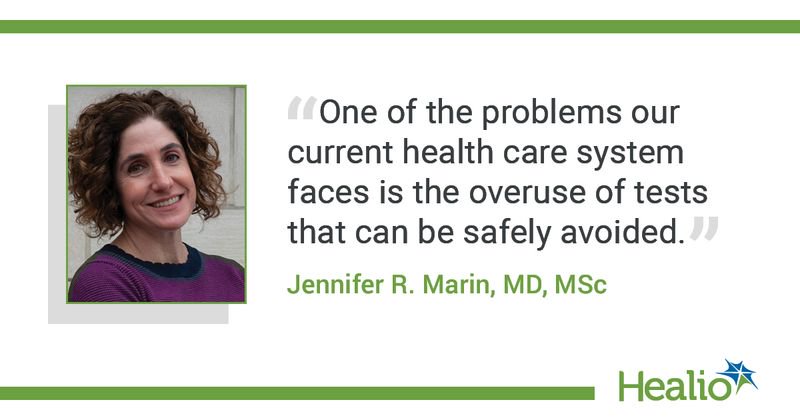Q&A: New pediatric guidance for advanced imaging in ED
Click Here to Manage Email Alerts
Key takeaways:
- New guidance focuses on the risks and benefits of advanced imaging for children in the ED.
- A major misconception is that imaging needs to be performed before transferring a patient to a pediatric center.
New guidance from the AAP and other groups advises providers to weigh the benefits and risks of performing advanced imaging on children in the ED.
The AAP, American College of Emergency Physicians and American College of Radiology collaborated on a joint policy statement and technical report that provides recommendations on optimal imaging strategies for common pediatric conditions to help minimize potentially unnecessary imaging.

We checked in with Jennifer R. Marin, MD, MSc, professor of pediatrics, emergency medicine and radiology at the University of Pittsburgh School of Medicine, member of the AAP Committee on Pediatric Emergency Medicine and a co-author of the policy statement and technical report, to answer some questions about the guidance.
Healio: What prompted you and your colleagues to create the policy statement and technical report?
Marin: This topic has been of interest to me since I was a trainee. Both my research and clinical interests are centered around diagnostic imaging with a focus on minimizing low-value imaging — performed when the risks outweigh the benefits. One of the problems our current health care system faces is the overuse of tests that can be safely avoided. My emergency medicine and radiology colleagues with expertise in the field collaborated to develop these documents with the hope that providers could have a valuable, consolidated resource that could be used at the point of care to aid in decision-making surrounding imaging for pediatric emergency care.
Healio: Who is the intended audience?
Marin: There are several target audiences. The primary audience are providers in the emergency department who take care of children. These documents can also be of value to any provider who sees children and may refer them to the emergency department — anyone who cares for ill or injured children.
Healio: What are the recommendations for emergency departments?
Marin: Some of them are more targeted toward actual hospitals. Some of them are targeted toward primary care providers, and some of them are condition specific. For example, if you're taking care of a child with seizures, if you’re considering a diagnosis of appendicitis, if a child with a ventricular shunt is being evaluated — these are all scenarios for which these recommendations can be helpful.
Healio: Are there any misconceptions about imaging a pediatric patient?
Marin: A big misconception is the notion that providers need to do a thorough workup, including imaging, prior to transferring a patient to a pediatric center. The recommendations provide a case for why that is actually more harmful than helpful. For cases where you will transfer the patient, it is best to transfer the patient and defer any imaging to the pediatric center — regardless of imaging findings.
We wanted to emphasize and empower providers who are practicing, for example, at a community hospital who have made the decision that a patient needs to go to a specialty hospital. A lot of times, referring providers mistakenly think that they are obligated to do imaging before the patient is transferred, but that is not the case.
We are very excited that we were able to put together the supplement for the technical report, because it includes several publicly available online guidelines from various children’s hospitals that are evidence-based and were carefully crafted by specialists in that area. We hope these will be of use for providers at the point-of-care to improve the care of pediatric patients in the emergency department.
References:
- Marin JR, et al. Pediatrics. 2024;doi:10.1542/peds.2024-06684.
- Marin JR, et al. Pediatrics. 2024;doi:10.1542/peds.2024-06685.
